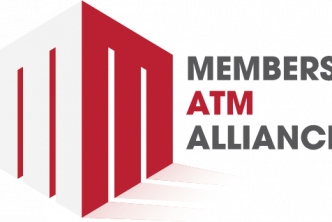By: John Cohron, JMFA Chief Executive Officer
Is your overdraft program taking a backseat?
Like many Americans, community credit unions continue to face challenges related to a lack of time, money and/or the personnel to get things done. One thing that can get overlooked along the way—but shouldn’t—is your overdraft program. While you may not notice any issues on the surface, all aspects of it need to be periodically evaluated to make sure it’s adhering to regulatory guidelines, industry best practices and consumer expectations. If your program has been stuck on the backburner, you not only risk having lackluster service and results, but you also leave your institution open to regulatory scrutiny, litigation and more.
So much to do, so little time—and resources
Your staff members have a lot vying for their attention these days. Your team may be facing:
- Too many projects
A lengthy list of exciting strategic initiatives, including the rush to digital transformation brought on by the pandemic, can take up valuable time, pushing important but less-exciting tasks like your overdraft program to the side. Does evaluating your overdraft strategy seem more complicated given recent market shifts and regulatory uncertainty?
- Inadvertent neglect
Evaluating your overdraft strategy may have fallen off the radar completely in the midst of time and budget constraints. Regardless of how much revenue your program currently provides, it’s critical to take the time to understand how it is used by your members. There are too many risks associated with maintaining the status quo. Do you need help with deciphering the value of your program to preserve needed revenue?
- Shortage of workers
During the Great Resignation of 2021, droves of workers quit their jobs, for a variety of reasons. Credit unions were not immune, with human resource officers frustrated at candidates missing scheduled interviews or, even worse, the first day on the job. Is your team overworked and thus unable to get to every task on their plate?
- Knowledge gap due to workforce turnover
The impact of the workforce changes brought on by the pandemic continues to put a strain on the delivery of services in all business sectors. The latest statistics from the U.S. Labor Department Job Openings and Labor Turnover Report indicated a record 11.5 million job openings in March. As turnover rates remain historically high, workers may be especially hard to retain, leaving gaps in knowledge of how to communicate program details properly and consistently to your members. Has your staff fallen behind on new-hire and refresher training to ensure your members are knowledgeable about how your overdraft program works?
If you answered “yes” to any of the above questions, it’s crucial to move program evaluation to the top of your priority list.
Risks of overlooking your overdraft strategy
Accepting the status quo can lead to processes and procedures becoming stale. This opens your credit union up to vulnerabilities, such as:
- Potential regulatory exam issues
- Additional risk for class-action lawsuits
- Confusion or lack of understanding among members
- Members going elsewhere to have their needs met
As the focus and attention on overdraft programs increases, it’s essential to perform a periodic, top-to-bottom assessment that looks at:
- Staff training and program knowledge (including lobby and call center)
- Disclosures
- Consistency in communication
- Compliance with regulatory rules and best practices
- Financial education resources
- Appropriate fee amounts
- Program components including de minimis, daily caps, grace periods, low-balance alerts, etc.
Optimize program results with proven resources
If strained resources and other projects currently consume all your team’s focus and attention, it may be time to lean on an outside expert to ensure your overdraft program’s success. Don’t leave program evaluations on the backburner and risk getting burned. A professional overdraft program consultant can ease the burden of periodic program reviews and make sure your overdraft program is optimized in every way.






